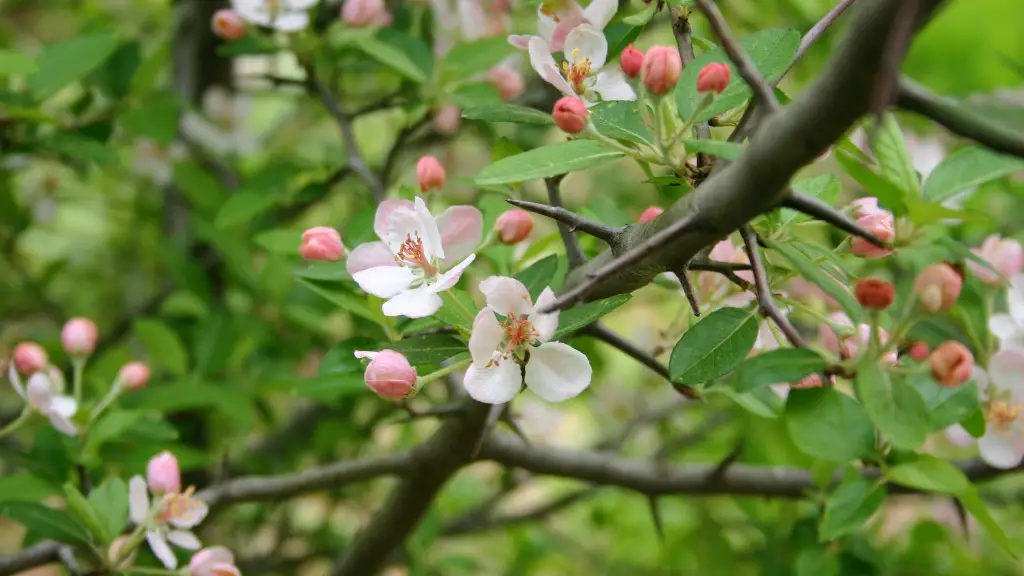It is important to know when and how to prune an apple tree in order to ensure that it grows healthy and yields good fruit. Pruning is essential to keeping an apple tree in optimal condition. Proper pruning helps apple trees maintain their structure, increases air circulation, and enhances the quality of the fruit. The best time to prune an apple tree depends on the climate and the conditions of the tree, but it should typically be done in the late winter or early spring. Here are a few tips on when and how to prune an apple tree.
1. Get the Right Tools
To prune an apple tree properly, you must have the right tools. Pruning shears, loppers, and a saw are essential. Sharpen the blades of your tools before you begin pruning to reduce the stress on the tree. Make sure you wear protective gear such as gloves, glasses, and clothing to avoid getting injured during the pruning process.
2. Pruning Young Trees
Young trees should be pruned in the late winter, generally when temperatures are between 40 degrees Fahrenheit and 45 degrees Fahrenheit, to ensure healthy growth. The first step is to remove dead, diseased, and crossing branches. This will open up the space around the tree, allowing air to flow and aiding the growth of the tree. Also, remove any branches that are growing straight up and down. These are less productive in terms of producing fruit and can be pruned off to make room for healthy branches.
3. Pruning Mature Trees
For mature trees, pruning should take place during the late winter or early spring. The same principles apply for pruning mature trees as for young trees; remove dead, diseased, and crossing branches as well as any unproductive branches. However, with mature trees it is important to remember to not over prune. Cut away only the necessary branches and leave enough foliage to allow for sufficient photosynthesis.
4. How to Prune
When pruning the tree, start from the base and work your way up. Cut branches at a 45-degree angle and keep your cuts clean and smooth. Make sure to use sharp pruning shears to ensure that the cuts are precise. Use loppers or a saw for thicker branches. After pruning, pick up any fallen leaves or twigs and discard them away from the tree to prevent disease.
5. After Pruning
When you finish pruning, apply a thin layer of mulch around the tree. Mulch helps retain moisture, reduces weeds, and moderates soil temperature. Keep an eye on the tree for signs of disease or any signs of failure to thrive, and prune again if necessary.
6. Pest Control
Apple trees are susceptible to pests, so it is important to keep them under control. Inspect the tree regularly and check the leaves, fruit, and branches for any signs of pests. If pests are spotted, use an appropriate pesticide to eliminate them. Make sure to use a pesticide that is safe for the tree.
7. Fertilizing
Fertilizing your apple tree with organic material every year will help it to flourish. Organic fertilizers such as compost are a great source of essential nutrients for the tree. Organic fertilizers release nutrients slowly over time and provide the tree with a steady supply of nourishment.
8. Pruning during the Growing Season
Pruning during the growing season should be done sparingly as it can disrupt the growth of the tree. Remove any branches that are growing in an awkward direction or damaging other parts of the tree. Keep in mind that pruning during the growing season can be stressful for the tree, so only do it when absolutely necessary.
9. Removal of Dead and Diseased Branches
Regularly inspect your apple tree and remove any dead or diseased branches as soon as you spot them. Dead branches can harbor diseases and attract pests, so it is important to remove them promptly. If you notice any signs of disease, seek professional help to treat it.
10. Choose the Right Variety
When choosing an apple tree, it is important to select a variety suited to your climate and soil conditions. Different varieties of apple trees have varying needs, so it is important to do your research and select a variety that will thrive in your climate and soil.
11. Maintaining Optimal Tree Structure
The structure of the apple tree is an important factor for success. Regularly inspect the tree structure and make sure all the branches are evenly spaced and not crossing. This will ensure that the tree is well ventilated and the branches are able to receive enough sunlight.
12. Regular Pruning
One of the most important things you can do for your apple tree is to prune it regularly. This will help to keep the tree healthy and will ensure that it yields a good crop of apples. Aim to prune the tree once a year, in the late winter or early spring.


